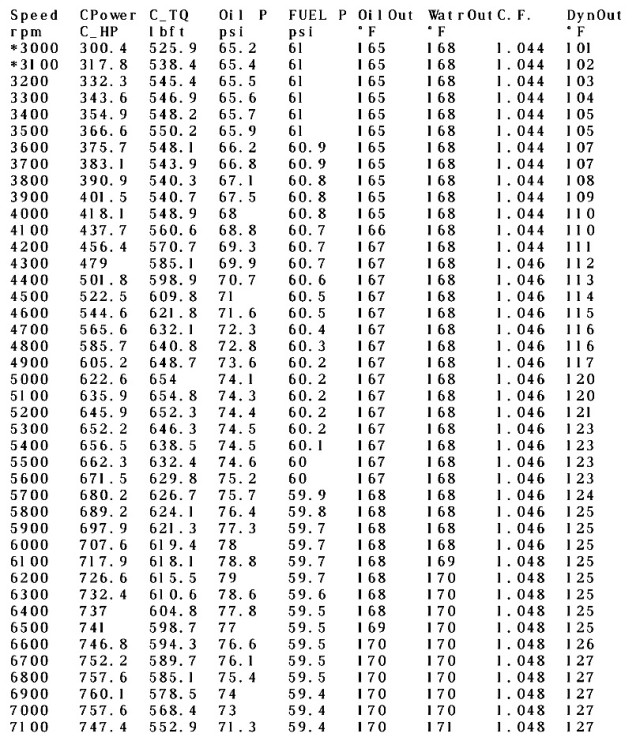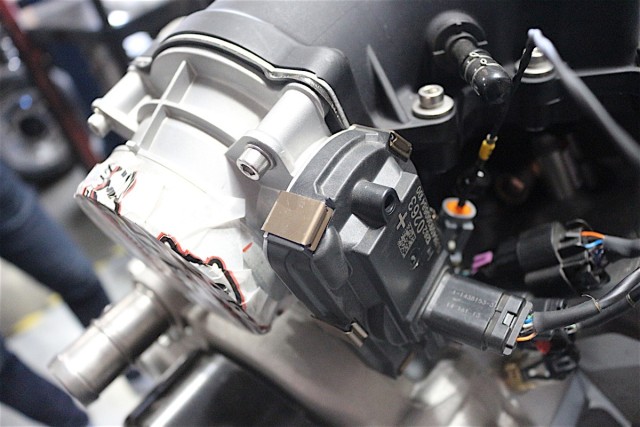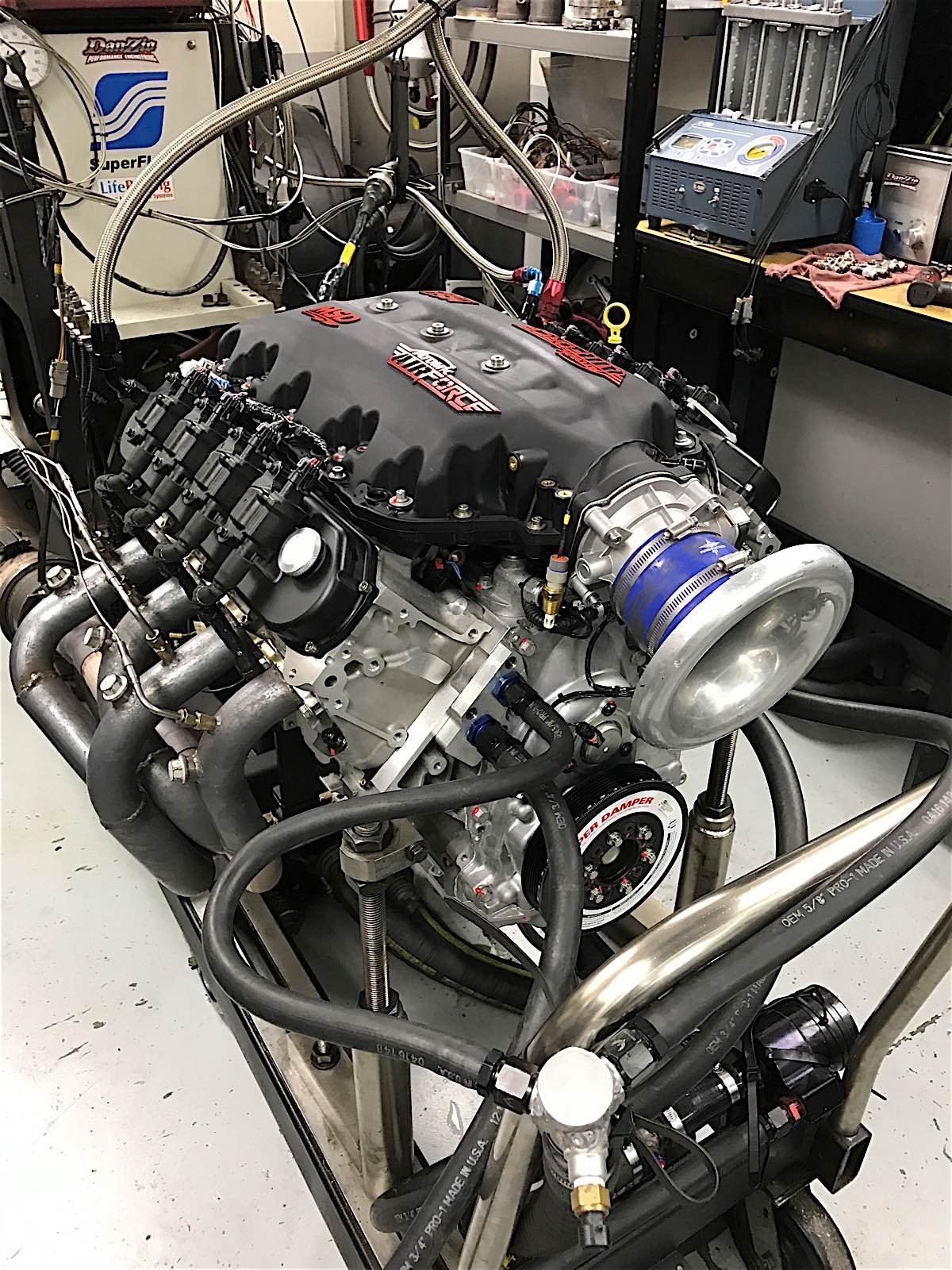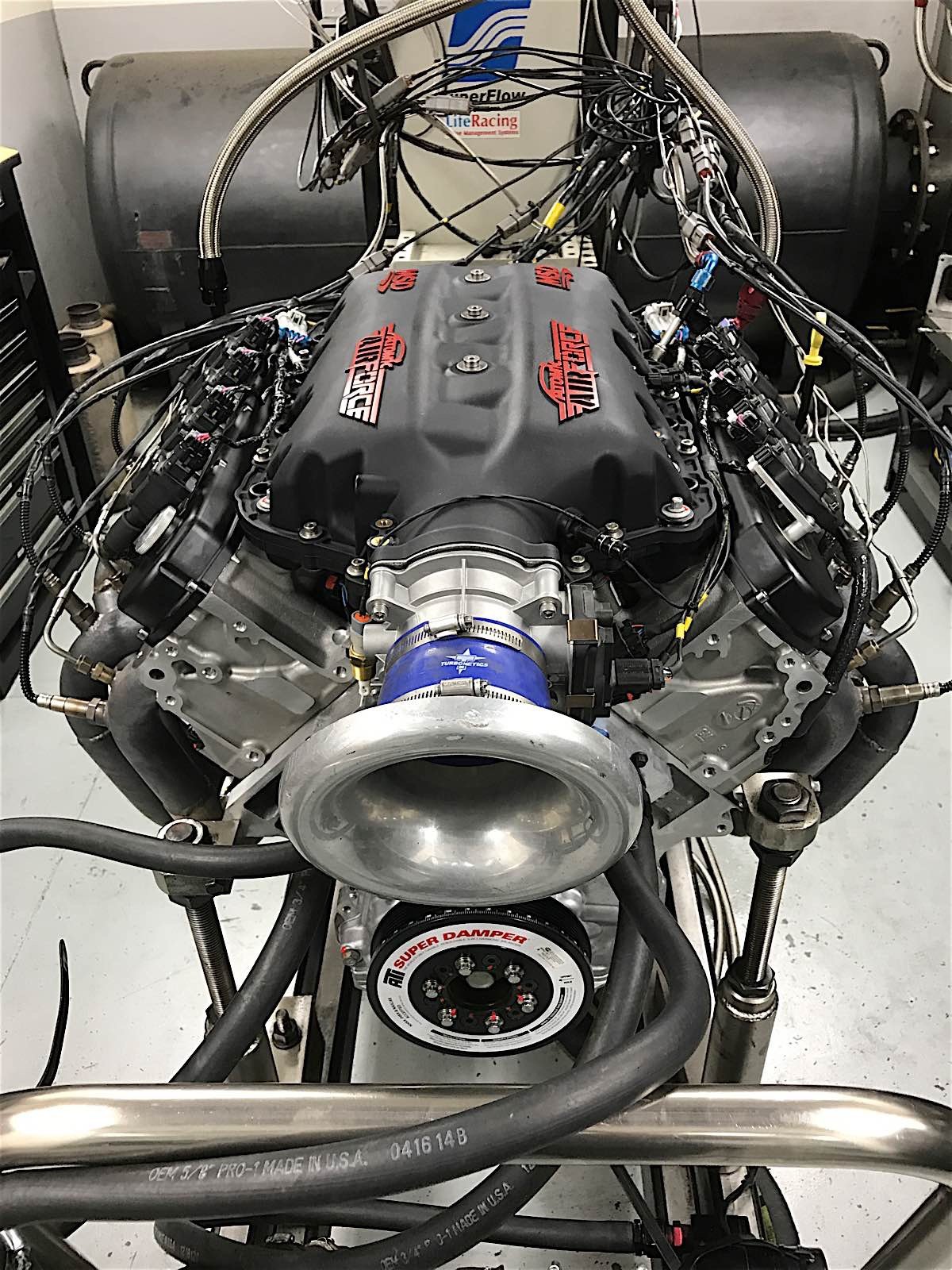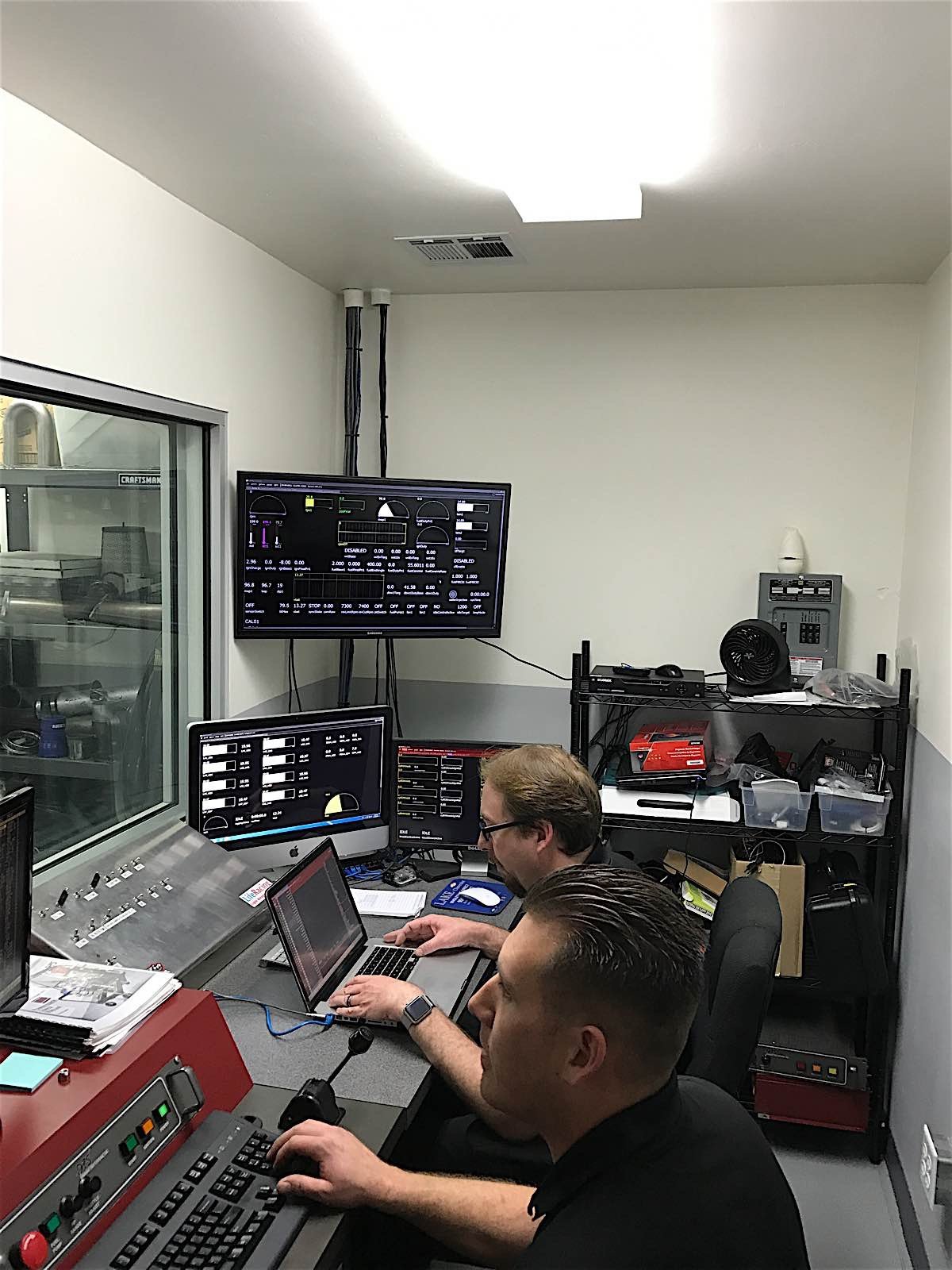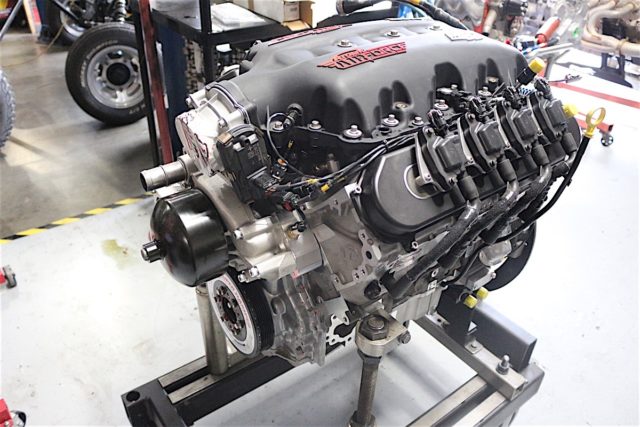 [1]Back in May of 2016, famed powerplant builders Katech took the direct-injection LT1 [2] platform to an all new high on pump gas, while staying naturally aspirated. Since direct injection engines have grown in popularity and aftermarket support, engine builders everywhere see the potential and want to tap into the power.
[1]Back in May of 2016, famed powerplant builders Katech took the direct-injection LT1 [2] platform to an all new high on pump gas, while staying naturally aspirated. Since direct injection engines have grown in popularity and aftermarket support, engine builders everywhere see the potential and want to tap into the power.
The automotive performance world is a competitive market obviously, and when one engine builder throws down the gauntlet, another is in line to pick it up and accept the challenge. This was just the case with the Katech engine. Well know engine builders Danzio Performance [3] are huge in the desert racing scene, constructing engine programs for Trophy Trucks, exotic sand rails and more. Just a few months after the Katech news, Danzio set their sights on the achievement [4] of most powerful NA LT1 on 91 octane.
“I didn’t even want to tell anybody what it made until we dynoed the next engine to makes sure there wasn’t something wrong with the dyno. I was really amazed, that running on 91 octane it made 760.1 horsepower and really strong torque numbers at 654.8 lb-ft. The curve is flat too, so it holds it through the mid range,” Chris Muzio of Danzio showed us.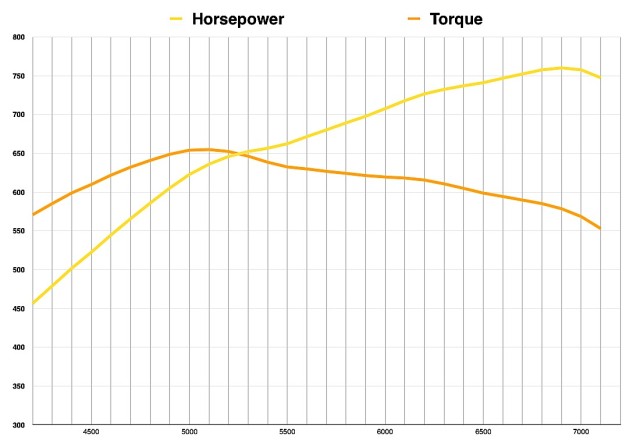 [5]
[5]
Muzio kept his cards close to his chest when it comes to the details of this engine, but he did let us in on some key points. As per the informal “rules” of this experiment, the engine was only run on 91 octane pump gas and remained naturally aspirated. A stock 6.2-liter GM block was CNC machined by Steve Demirjian at Race Engine Development [7], and fitted with sleeves supplied by Darton [8]. “It’s a 440 ci, I wasn’t originally going to disclose that but I think I have to with the numbers it made, or people are going to call me out,” Muzio conceded. So with an additional 13 cubic inches over Katech, Danzio was able to extract an additional 60 horsepower.
“Katech didn’t disclose exactly what’s inside the engine, same as why I didn’t, but I would assume we went down the same path. The cam that’s in there now is a full custom grind that I came up with, and that (along with the head flow numbers) is part of the proprietary combination,” Muzio teased.
The cylinder head package is where things really started to spice up. “For the head flow numbers, we did beat the advertised CNC programs we’ve seen out there. We have a week of hand porting in each head, on and off the flow bench. I did want to get a CNC program done with them, but as soon as I hand that to somebody and they’ve digitized the port, they can mill them. It’s nice that we’ve hand ported them because I think we’ve got the edge,” Muzio explained.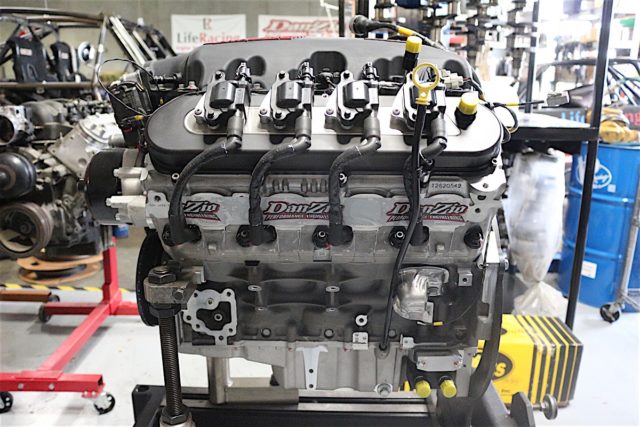 [9]
[9]
It’s widely known that the injector spray pattern and its relationship with the profile of the face of the piston is vital to atomization in direct-injection engines. While Danzio developed custom pistons to accommodate the compression ratio they wanted, they were equally careful not to disrupt the OEM engineering. “We designed the pistons so that we could get the compression. With direct injection, there’s only certain things you can do with the dome in the piston. The factory does an excellent job, so you have to be careful changing that stuff,” Muzio said.
“Compression ratio-wise, I’m not going to tell you exactly what the number is, but it’s very high. The reason why I did that is because I’ve had more experience with GDI engines than a lot of people, we’ve turbocharged them, and I know the window you have to work with.”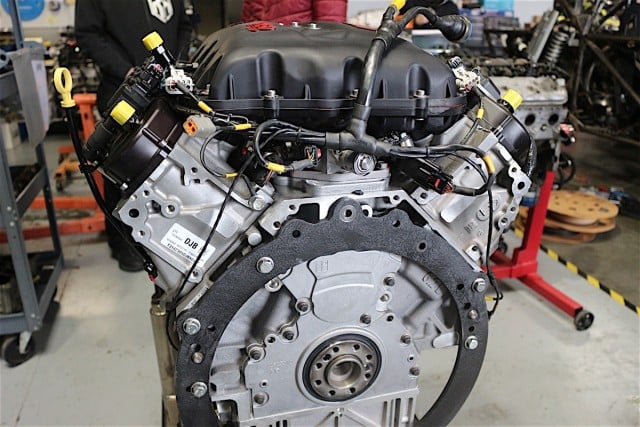 [10]
[10]
To outfit the custom heads, was an equally important albeit secretive valvetrain combination. Danzio likes to turn their engines high, and the LT1 would see up to 7,100 rpm so some improvements would be necessary to prevent float, interference problems or other issues.
“We did some modifications to the factory rocker-arms (converting from needle rollers to bushings) so they could handle the RPM, we did some lightening and changed the spring/lifter combination,” Muzio generalized. One area both Katech and Danzio chose to address similarly was the variable valve timing. While it’s popular to disable this feature, both builders chose to retain it and limit the phaser range.
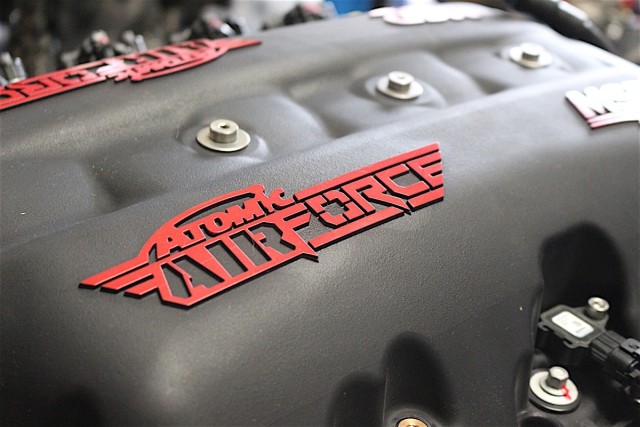 [11]“We retained the variable valve timing, and did it for a reason; because of the cam profile we ran (which was fairly large) and I didn’t want to affect the low-end too much. We did run into some clearance issues inside the engine that we had to address, but we were looking for it so we were able to fix it before it became an issue. We made a limited for the phaser, we had to limit it more than the factory,” he explained.
[11]“We retained the variable valve timing, and did it for a reason; because of the cam profile we ran (which was fairly large) and I didn’t want to affect the low-end too much. We did run into some clearance issues inside the engine that we had to address, but we were looking for it so we were able to fix it before it became an issue. We made a limited for the phaser, we had to limit it more than the factory,” he explained.
Exhaust and induction systems for this potent engine are surprisingly run of the mill, an MSD [13] Atomic intake manifold draws air through an OEM GM throttle body. “For naturally aspirated engines, I prefer the plastic intakes because they don’t heat soak and the runner lengths are longer than sheetmetal,” Muzio explained.
“I fiddled with headers on the dyno, and the combination we had from prior LS engines was very similar. They ended up being 1-7/8 to 2-inch, with a 3-1/2-inch collector. I tried a tri-y, it picked up some torque in the mid-range but didn’t seem to affect it too much.”
One of the known issues many run into when it comes to building power in these direct injected engines is running out of fuel to support the horsepower. Direct injection pumps can be pushed with a little modding of the drive lobe, but engine management is where Danzio made most of their gain.
“I was ready for that, I thought that thing was going to start running out of fuel. I was going to use the direct-injection pump from the LT4 if needed – the supercharged engine. That was one of the joys of using the Life Racing ECU, I have full control over mapping the pump,” Muzio explained.
“From start to finish I must have done 150 dyno pulls. With the Life Racing ECU, being able to control the injection angles and the variable valve timing so precisely was part of the key to getting power out of this engine,” Muzio concluded.
Plans for the future include more testing and development with the engine in a car, new solutions for the pulley mounting arrangements, and possible E85 testing. We like seeing horsepower wars and friendly rivalries that ultimately bring about technology and developments we all can benefit from. Look for more exciting builds like this.
